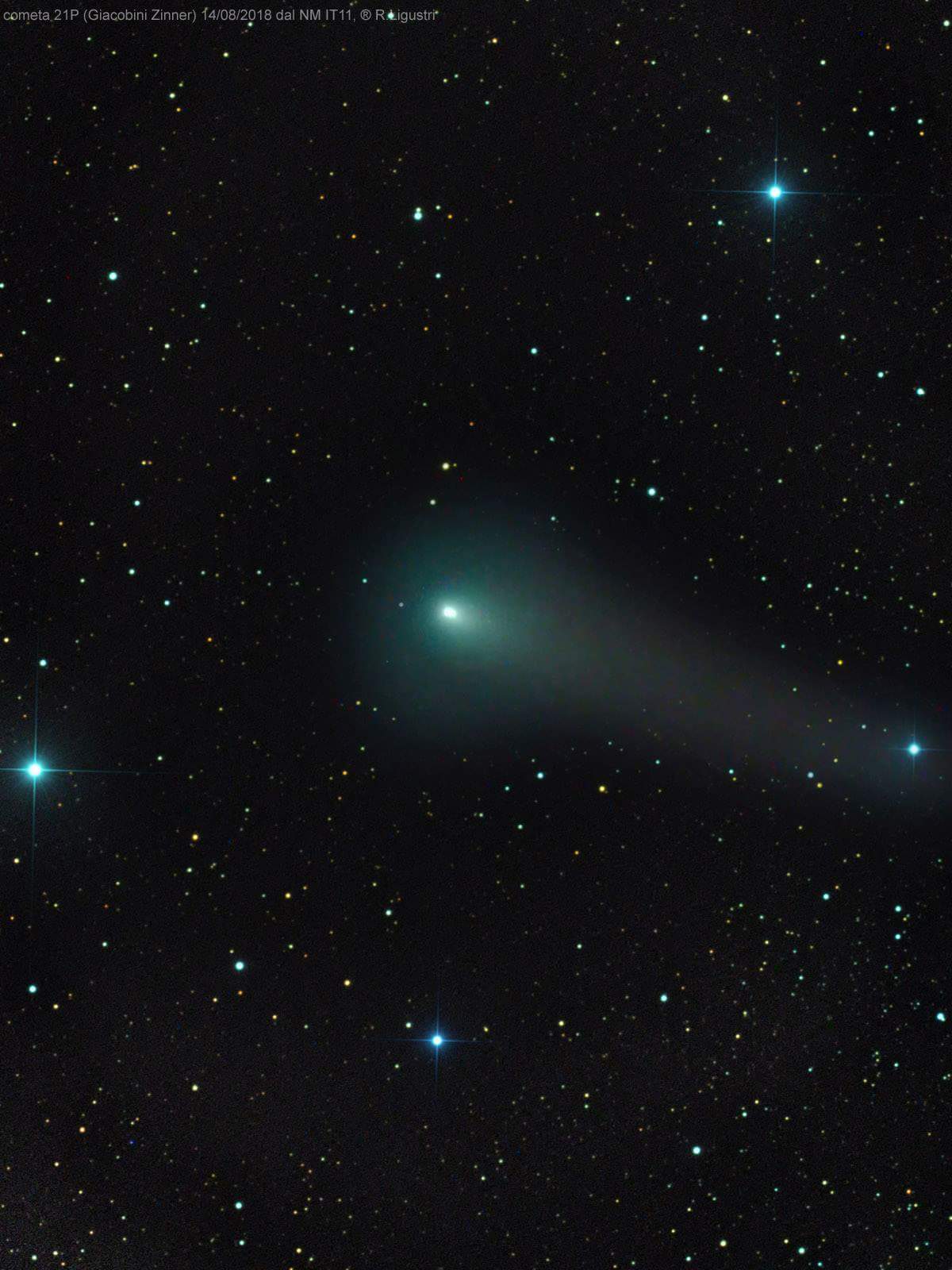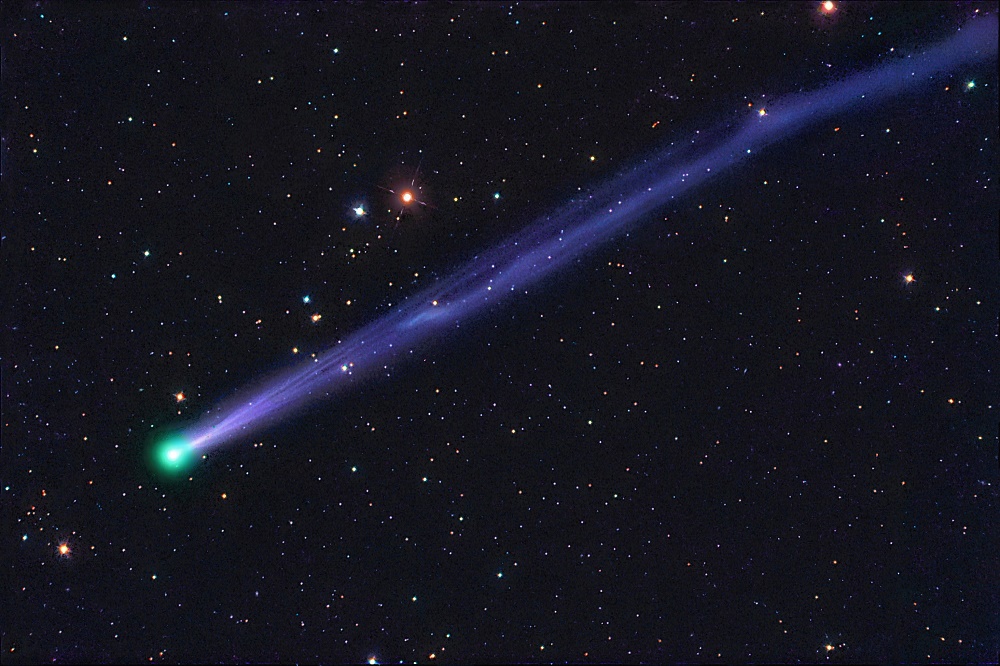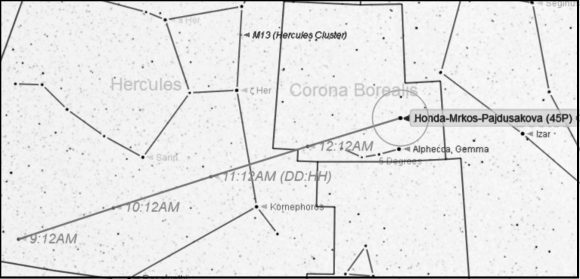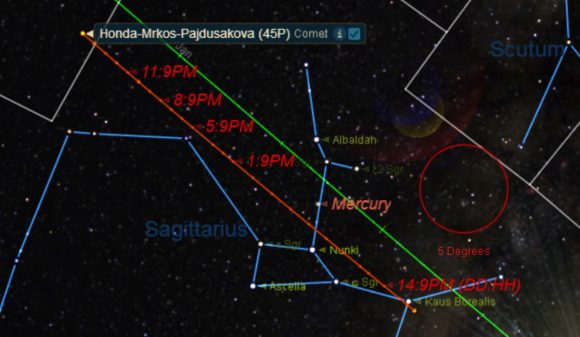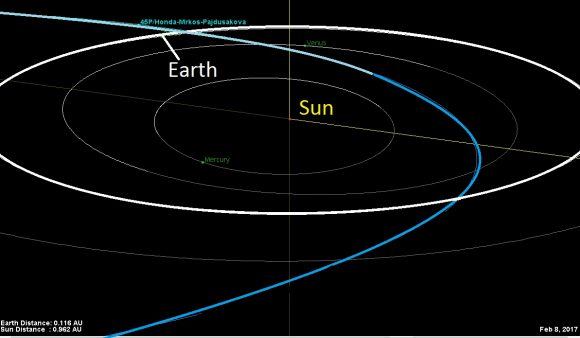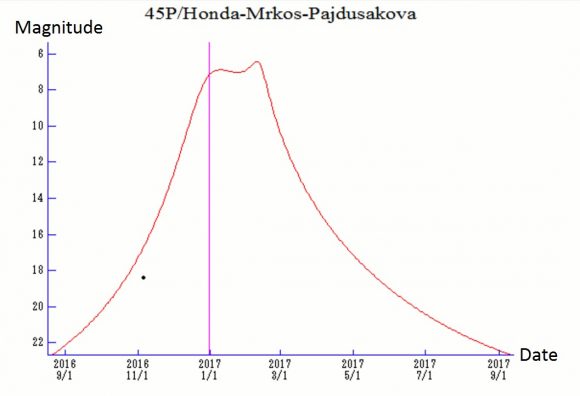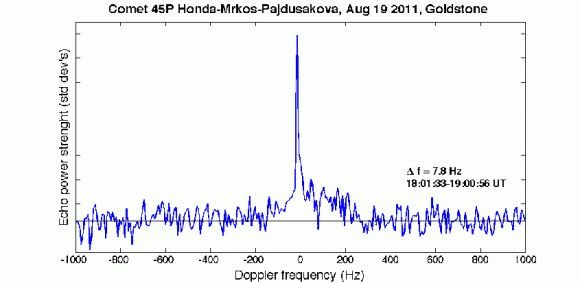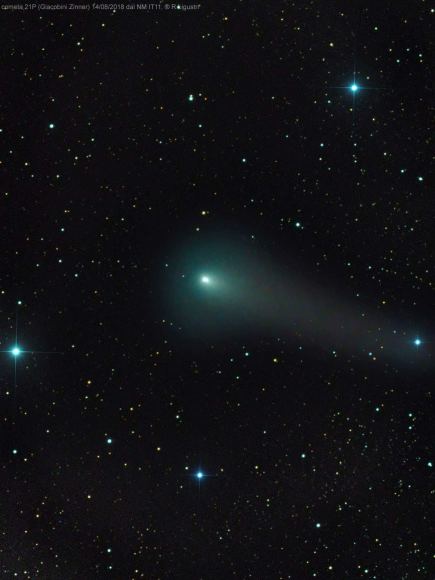
A periodic comet may put on a fine show for northern hemisphere viewers over the next few months.
Comet 21/P Giacobini-Zinner is currently a fine binocular comet, shining at +8th magnitude as it cruises across the constellation Cassiopeia. This places it above the horizon for the entire night for observers north of the equator in August, transiting the local meridian at dawn. And unlike most comets that get lost in the Sun’s glare (like the current situation with C/2017 S3 PanSTARRS), we’ll be able to track Comet 21/P Giacobini-Zinner right through perihelion on September 10th.
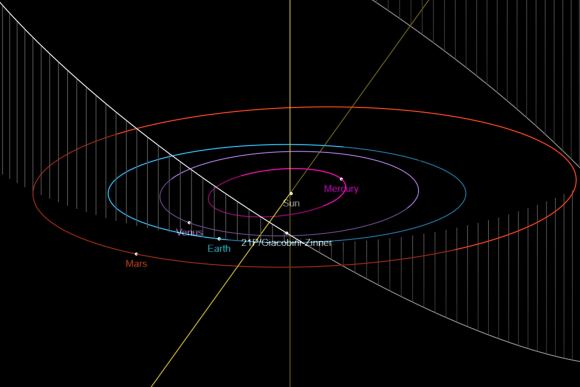
This is because the comet is on a short period, 6.6 year orbit around the Sun that takes it from an aphelion of 6 Astronomical Units (AU) exterior to Jupiter’s orbit, to a perihelion of 1.038 AU, just 3.3 million miles (5.2 million kilometers) exterior to Earth’s orbit. The 2018 apparition sees the comet pass 0.392 AU (36.5 million miles/58.3 million kilometers) from the Earth on September 11th.
This is the closest passage of the comet near Earth since September 14th, 1946, and won’t be topped until the perihelion passage of September 18th, 2058. Its next cycle of passes to Earth closer than 0.1 AU aren’t until next century in the years 2119 and 2195, respectively.
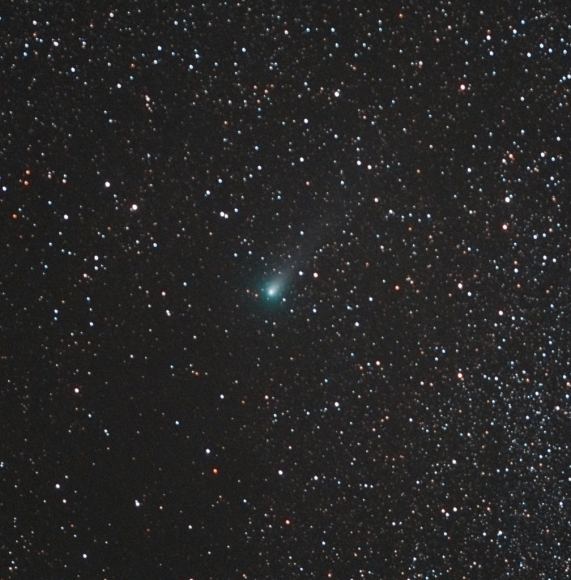
Discovered by astronomer Michel Giacobini at the Côte d’Azur Observatory in Nice, France on the night of December 20th, 1900 as it was crossing the constellation Aquarius, the 21st periodic comet was recovered two orbits later by Ernest Zinner on October 23rd, 1913 as it passed a series of variable stars near Beta Scuti.
Though the comet generally tops out at +8th magnitude, it has been known to undergo periodic outbursts near perihelion, bringing it up about 3 magnitudes (about 16 times) in brightness. This occurred most notably in 1946.
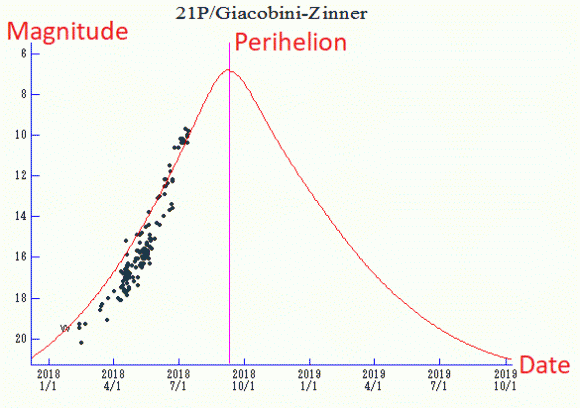
Comet 21/P Giacobini-Zinner is also the source of the Draconid (sometimes referred to as the Giacobinid) meteors, radiating from the constellation Draco the Dragon on and around October 7th and 8th. Feeble on most years, this shower can produce surprises, such as occurred in 1998, 2005 and most recently in 2011, when a Draconid outburst topped a zenithal hourly rate of 400 meteors per hour, flirting with ‘meteor storm’ status. And while we’re not expecting a meteor storm to accompany the 2018 perihelion passage of Comet 21/P Giacobini-Zinner, you just never know… it’s always worth keeping an eye out on early October mornings for the “Tears of the Dragon,” just in case. Note that the Moon reaches New phase on October 9th, just a few days after the meteor shower’s expected annual peak, a fine time to watch for any unheralded Draconid outbursts.
Prospects for Comet 21P
The comet is visible from the northern hemisphere through the remainder of August and all through September as it glides across Auriga, Taurus and Gemini and visits several well known celestial sights. In fact, it actually transits in front of several deep sky objects, including Messier 37 (Sept 10th), and Messier 35 (Sept 15th).
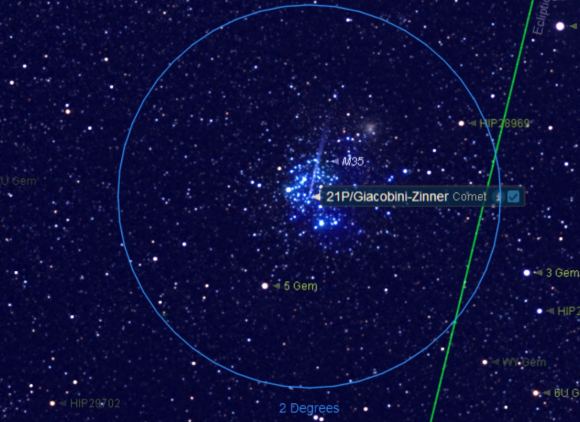
The comet will be moving at about two degrees per day when it’s nearest to the Earth, on and around September 11th.
We begin to lose the comet, as it heads southward in late October. Still, the comet is over 50 degrees above the eastern horizon at dawn come October 1st as seen from latitude 30 degrees north, having maintained a similar elevation throughout most of September. Not bad at all.
Here are some upcoming dates with destiny for Comet 21/P Giacobini-Zinner:
August 19: Crosses into the constellation Camelopardalis.
August 29: Crosses into the constellation Perseus.
August 30th: Crosses into the constellation Auriga.
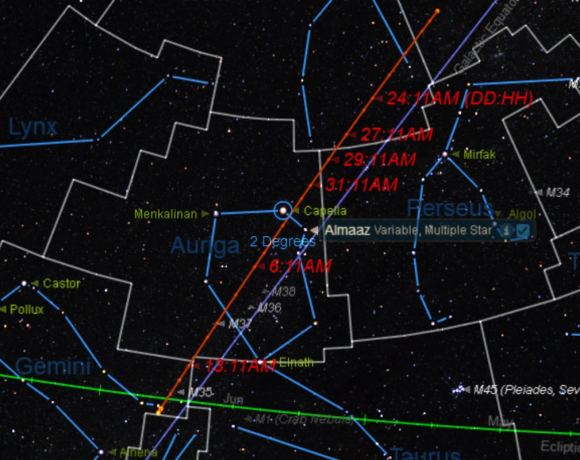
September 2: Passes one degree from the bright star Capella.
Sept 7-8: Grouped 2 degrees from the open clusters M36 and M38.
Sept 10: Photo-Op: Skirts very near the open cluster M37. Also reaches perihelion on this date, at magnitude +7.
Sept 11: Passes closest to the Earth, at 0.392 AU distant.
Sept 13: Nicks the corner of the constellation Taurus.
Sept 14th : Enters the constellation Gemini.
Sept 15th: Photo-Op: crosses in front of the open cluster M35.
Sept 16: Crosses the ecliptic southward and near the +3.3 magnitude star Propus (Eta Geminorum).
Sept 17: Crosses into Orion.
Sept 21: Crosses into Gemini.
Sept 23: Crosses into Monoceros.
Sept 24: Passes near the Christmas Tree Cluster, NGC 2264.
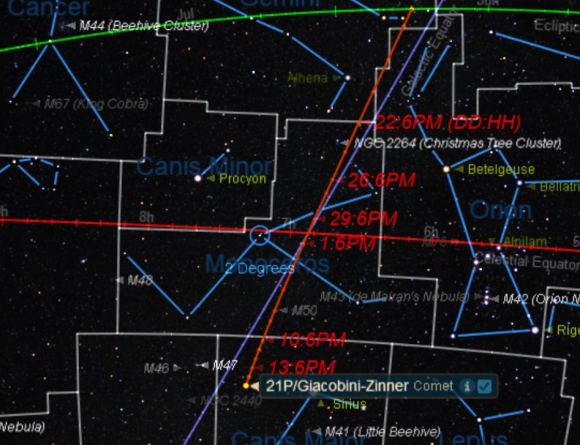
Oct 1: Crosses the galactic plane and the celestial equator southward.
Oct 7: Crosses in front of the open cluster M50.
Oct 10: Crosses into Canis Major.
Oct 31st: Passes near the bright star Aludra and may drop below +10th magnitude.
Binoculars are your best friend when you’re looking for comets brighter than +10th magnitude. With a generous field of view, binoculars allow you to sweep a suspect area until the faint fuzzball of a comet snaps into view. I like to ‘ambush’ a comet as it passes near a bright star, and a good time to spot comet 21/P Giacobini-Zinner is coming right up on September 2nd when it passes less than one degree from the bright +0.1 magnitude star Capella.
Don’t miss this year’s fine apparition of Comet 21/P Giacobini-Zinner, coming to a night sky near you.

